There are many famous quotes that reference windows. This is probably one of the most widely recognized,
“The eyes are a window to the soul.”
Whether we’re peeking in or peeking out, a window creates a mystery and story and often provides excitement through visual design.
These are several of the numerous reasons why photographers love taking pictures of windows.
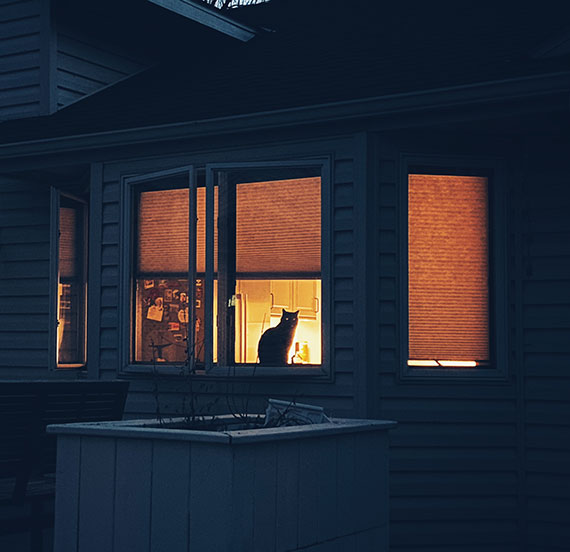
Photo by Kent DuFault
In this article, we’ll discuss some ways that you can place composition emphasis within your window photography.
Critical Thought: A photograph created with a sense of intent will generally receive a better audience than a photo that was simply a snapshot. Developing your intent within your photography is a core skill as you grow. This is true even when taking pictures of a simple inanimate object – like a window.
These are some composition Intent Elements for window photography or even a group of windows that we’ll discuss in this blog post.
- Architectural Design
- Framing a Subject
- Repetition of pattern within an Architectural Design
- Used as a Focal Point to a Subject
- Minimalism
- Creating a Mood or a Story Element
- The Concept of “Looking In” or “Looking Out”
- Semi-abstract Impressionism
Architectural Design
Merely recognizing the beauty of a particular architectural design of a window is one of the most common ways to photograph windows.
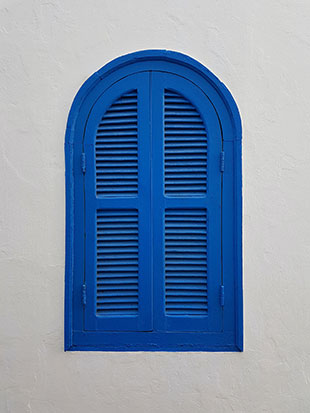
Photo by Mohammed lak
The above photograph demonstrates this type of intent for a window photo.
While there’s nothing wrong with this image, it doesn’t provide much for a viewer beyond a quick satisfied glance. We don’t learn much beyond the beauty of the design.
IDEA: This style of window photography (above) works well when you’re creating a body of work. That body of work could simply be different design styles of windows, or perhaps, it’s an in-depth photo essay on a particular building or style of architecture.
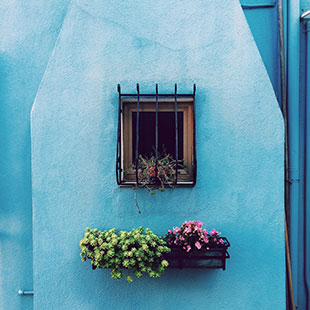
Photo by Paula Borowska
This photo goes a step further than the previous example by including some of the design elements surrounding the window.
Key Point: Including some of the surrounding areas of your subject window can provide a more extensive audience reception. Just make sure that your window remains the true subject of the photo.
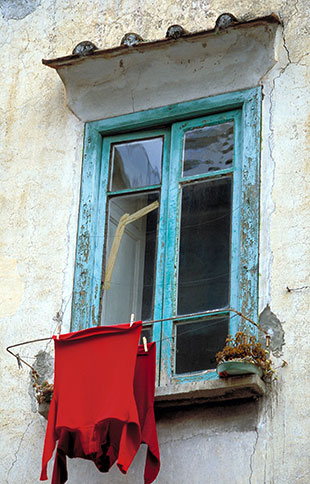
What is the subject?
Is the window the subject in this photo with the red shirt? Or, has the red shirt visually overpowered the window to become the subject?
It’s a tough call on this shot.
Red is a power color. However, the composition tends to favor the window and push the shirt back to becoming a focal point. What are your thoughts?
Framing a Subject
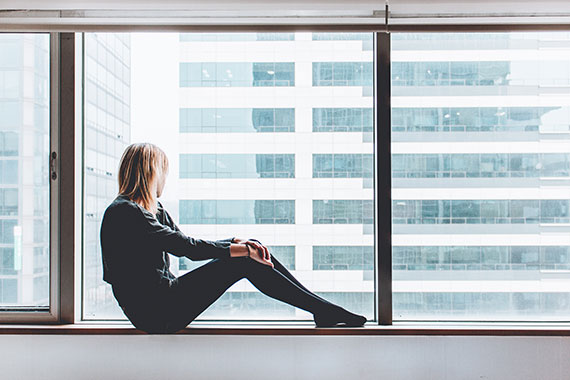
Photo by Alexandre Chambon
Outside of simple architectural design, this is the second most common and likely use of window photography.
Windows create a natural frame.
Remember This: When using a window as a frame, make crucial composition choices that push the window into submission to the subject. The example photo above is a good representation of that thought. There are many windows in this photo, but we definitely know that the woman is the subject.
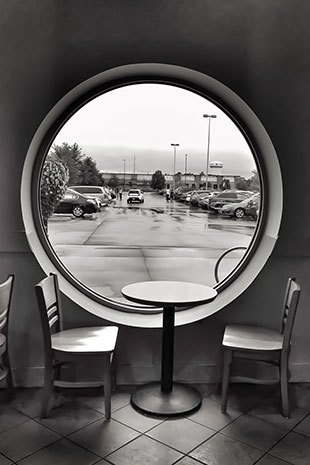
Photo by Kent DuFault
This example photo is a bit murkier when contemplating the subject. Is the window a frame? Or, is it actually the subject?
Images like this are fun because they are open to interpretation. Each person may see something or feel something different when viewing a window photograph such as this.
Presented in this manner, I think the window is the subject and not a frame.
If a person stood outside and peered in, or if there were something or someone at the table, that would change the visual weight and relegate the window back to be a frame for the subject.
Challenge!
Go out and create some window pictures. Vary your compositions so that in some cases, the window is a frame, and in other cases, the window is the subject. Try to get creative with your point of view!
Repetition or Pattern
Windows lend themselves very well to the composition tools of repetition and pattern. If you aren’t going after an architectural design element, this is likely the second option that will catch your eye in window photography.
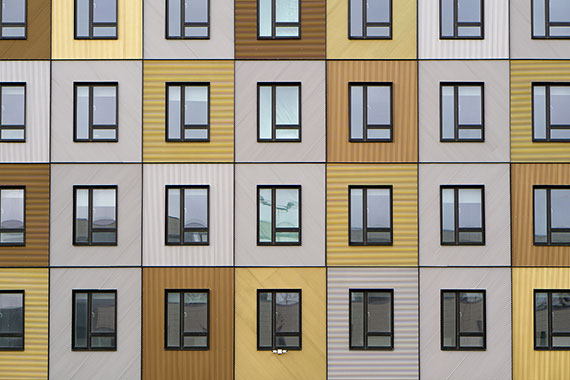
Photo by Pierre Chatel-Innocenti
Remember this: A pattern creates the most robust interest when there is a break in the pattern. This may not always be possible in your window photography, but you should be on the lookout for opportunity.
The above example photo depicts a repeating pattern without a break.
What might have generated a visual break?
Perhaps, someone in one of the windows looking out? Or, on the outside of the building, a bird in flight is captured in one of the window reflections. A pattern break doesn’t need to be overwhelming. The human mind is programmed to look for patterns, and even more importantly, a break in a pattern. It’s a survival instinct.
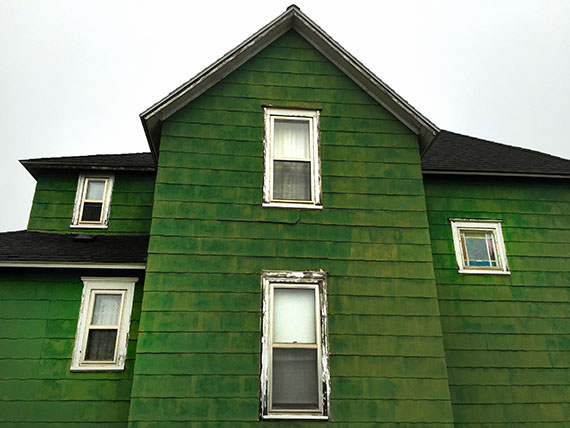
Photo by Kent DuFault
Critical Thought: Window repetition doesn’t have to be in a pattern to be visually exciting. Irregular repetition has the advantage of not requiring a break.
It’s Time for a Photo Walk!
Go out and photograph some repetitive windows. Try to find breaks in the pattern. Keep a keen eye out for interesting irregular repetition! Try different lighting scenarios and use window reflections to add visual interest whenever you can.
Focal Point
Using a window as a focal point is quite similar to using a window for a frame. The difference is in your choice of camera angle and the subject environment.
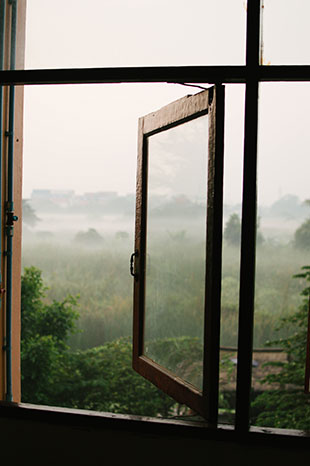
Photo by Hannah Tims
In the example photo above, the window serves as a focal point versus a frame.
It does this because the window is open.
The open window segments the space, and the handle creates a strong shape that draws a viewer’s eyes toward it and then beyond it to the subject, which is the landscape.
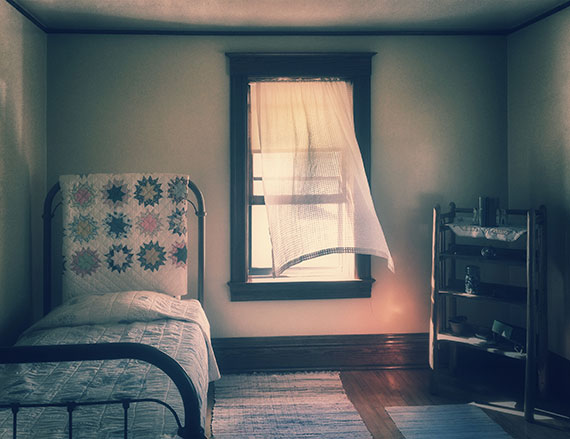
In this shot, the window serves as a focal point to the subject, which is the bedroom.
What if the window curtain weren’t blowing in the breeze? Would it still be a focal point?
Critical Thought: Motion is a very potent visual element in any photograph. People will tend to look at motion first before exploring the rest of the image. Movement adds significant visual weight.
If the window curtain weren’t in motion, the window would lose its status as a focal point for the room.
The bed, window, and shelving would become equal in visual energy.
Windows and Minimalism
Windows are often surrounded by exciting colors and shapes. With some practice and your use of pre-visualization, you can create some stunning minimalistic photography with windows.
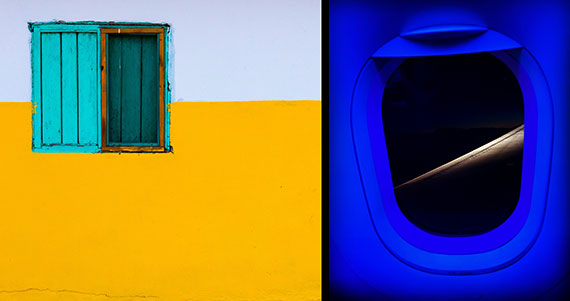
Left photo by Gareth Harper
Critical Thought: If your desire is to use Minimalism within your window photography, first hone in on what you’re seeing and how you want to highlight it. Anything that doesn’t fit into that idea should be eliminated from the frame of your picture.
For the left example photo (above), the Minimalism concept was color contrast and shape.
For the right example photo (above), the Minimalism concept was tonal contrast and shape.
Challenge!
Go out and photograph windows while using the art concept of Minimalism. Trim your picture opportunities down to the least number of elements possible.
Storytelling & Mood Window Photos
Telling a story with a window can be quite literal, or you can flex your imaginative muscles with your storytelling, perhaps creating a moodier vibe. There are no rules!
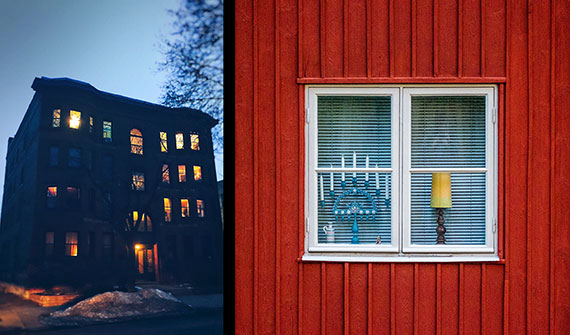
Left photo by Kent DuFault, right photo by Nikola Johnny Mirkovic
The right example in the photo above is quite literal in its description of that home. We learn a lot about the occupants from a few simple items displayed within the window.
The photo on the left was created by me, the author. I came out of a hardware store one evening and saw this apartment building across the street. It struck me as being visually exciting, but I also pre-visualized a moody and ethereal idea of “many windows – many stories.” That thought became my intent.
Your turn!
Go out with your camera and see what stories you can capture while using windows. Go for the literal approach, but also stretch your imagination for some moody and provocative photos. Share your shots with friends and family. Ask them what they see as the story or the mood. You’ll be delighted if they caught your meaning. If they didn’t, consider what you may do differently to get your point across.
Looking In or Looking Out
Windows create a robust subliminal message within people. When planning your window photograph, consider what point-of-view best tells your story.
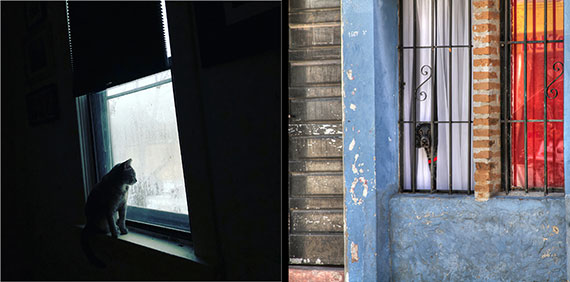
Both photos by Kent DuFault
Should you be looking in, or should you capture the scene looking out?
Consider the possibilities, especially the emotions touched by a simple change in POV.
In the above example images, one conveys a sense of longing, and the other denotes a trapped feeling.
Semi-Abstract Impressionism
The design and function of a window lead to a lot of symbolism. You can really play on that by taking your window pictures a step further toward semi-abstract impressionism.
Remember This: The definition of semi-abstract photography is when you depict an object that is clearly identifiable in an unusual manner that requires thought and consideration.
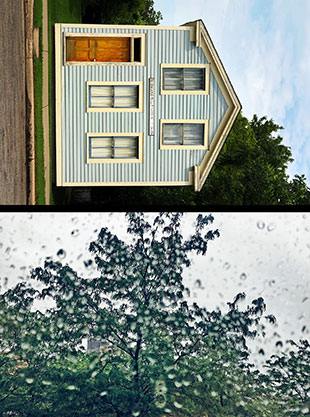
Both photos by Kent DuFault
These two example photos by the author are semi-abstract window photography.
You know what is depicted, but it takes a moment of thought to sort it out.
The upper shot is from the outside looking in, and the other is from the inside looking out.
Your Challenge: Spend a day out taking window pictures. Use creativity and pre-visualization to depict a window in a semi-abstract manner. The window can be the subject of your photographs, or you can use the window in any other of the intent elements discussed within this article. Try and make use of window symbolism right up to the edge of it becoming a complete abstract photo.
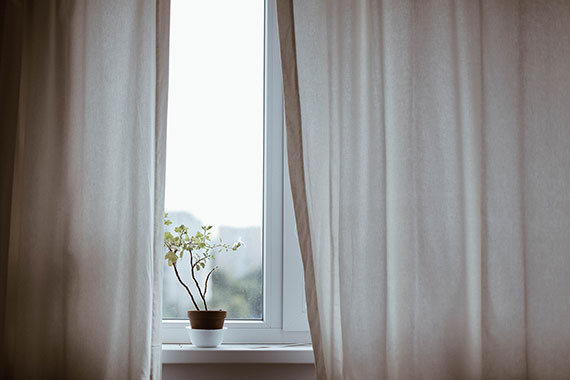
Photo by Eduard Militaru
Using all the little ideas presented in this article, what can you tell me about the picture? Do you like it? Do you sense a mood or a story? If it were your picture, what would you have done differently?
Let’s Re-cap!
- Windows create mystery, story, and visual design.
- Window photography benefits by having photographer intent.
- When concentrating on window design, as a subject, consider creating a body of work to increase viewer interest.
- When including architectural details around a window, compose and post-process your image in a manner that places subject emphasis onto the window.
- When using a window as a frame, make sure that it doesn’t overpower the subject.
- A pattern creates the keenest visual interest when there’s a break in the pattern.
- Irregular repetition doesn’t require a break to be visually exciting.
- Motion is a very potent visual element. Using movement around your window can generate subconscious excitement. It can also turn a window into a focal point.
- For window Minimalist photography, eliminate any element that doesn’t support your creative idea. The fewer details included, the better.
- Telling a story with a window can be literal or ethereal. Setting a mood is crucial in telling photo stories.
- Give consideration to whether your window image should be looking in or looking out.
- Semi-abstract impressionist photography lends itself to the symbolism associated with windows.
About the Author:
Kent DuFault is an author and photographer with over 35 years of experience. He’s currently the director of content at the online photography school, Photzy.com
For Further Training, Deal Ending Soon:
With summer here and readers looking for more photography practice near home, we were able to get another huge markdown on the popular Photo Action Cards. Expand your photography skills with 65 printable project sheets that will give you over 200 photography assignments, covering everything you can imagine. They are currently 88% off today if you want to try them out.
These Action Cards discuss a photographic topic, provide you with suggested considerations, and give you specific photographic assignments. They’ll kick you out of the “nest” to go have a personal discovery experience all on your own.
Deal found here: The Photography Action Cards at 88% Off
- - - - - - - - - - - - - - - - - - - - - - - - - - - - - - - - - - - - - - - - - - - - - - - - - - - - - - - - - - - - - - - - - - - - - - - - - -
Did you appreciate this newsletter? Please help us keep it going by Joining Our Patreon Supporters
What are your thoughts on this article? Join the discussion on our Facebook Page
PictureCorrect subscribers can also learn more today with our #1 bestseller: The Photography Tutorial eBook
- - - - - - - - - - - - - - - - - - - - - - - - - - - - - - - - - - - - - - - - - - - - - - - - - - - - - - - - - - - - - - - - - - - - - - - - - -
The post Window Photography Tips appeared first on PictureCorrect.
from PictureCorrect https://ift.tt/5zwi7ug
via IFTTT







0 kommenttia:
Lähetä kommentti